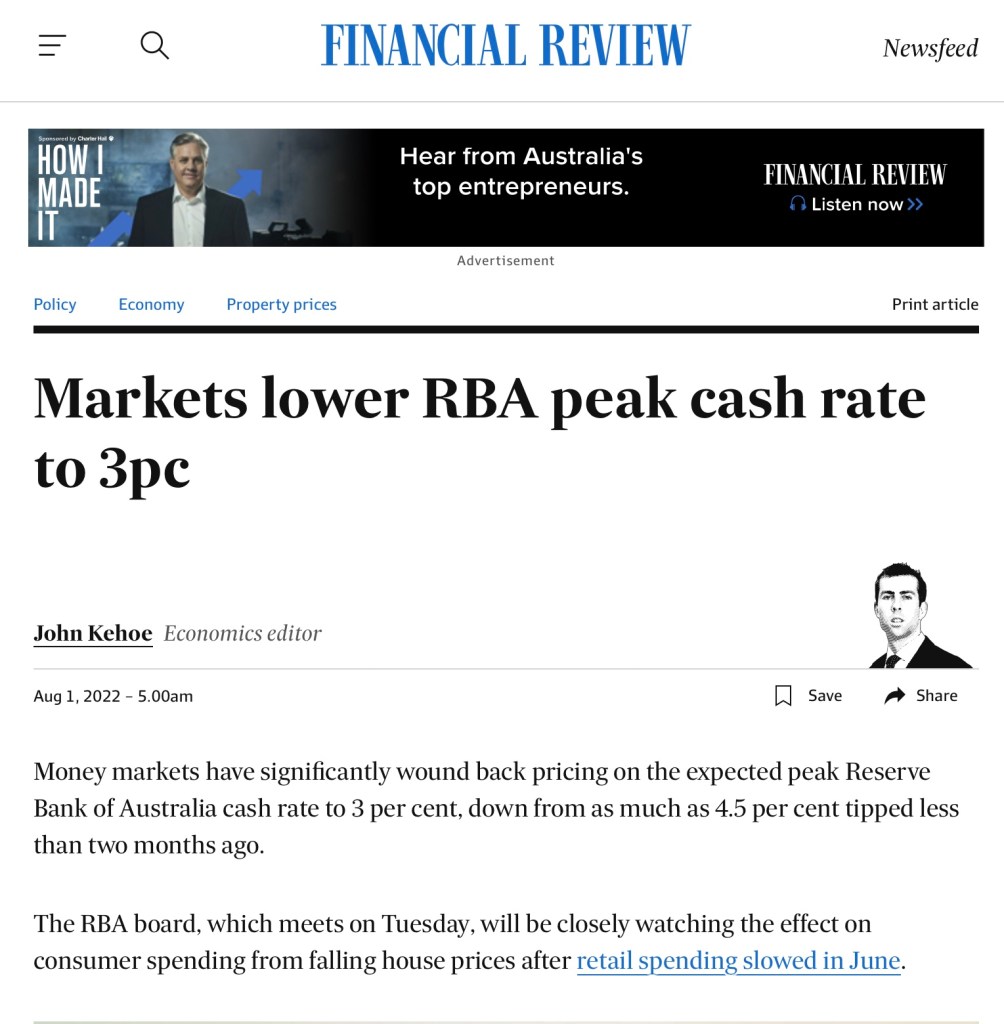Stock markets have been pricing in the anticipated end of inflation for the last little while. Is Mr Market right?
Continue readingInterest rates
The US debt ceiling – does it matter?
It’s time for a detailed note on the political circus in Washington DC gyrating over the debt ceiling.
Continue readingWhere is Ignominy?
I’m not entirely sure where Ignominy is but I do know that lots of things end up there. It is common to hear of this or that ending up in Ignominy. Perhaps I should look it up on Google Maps.
Continue readingJust go
The Reserve Bank of Australia has finally admitted that “we did a terrible job.”
Continue readingClueless Central
The Australian central bank governor says he doesn’t know how high interest rates will have to go to get rampant inflation under control. That may be the first thing he has said that I believe.
Continue readingWhy does the RBA target a medium term inflation rate of between 2% and 3% pa?
I’m investigating the origin of this target. I want to know the basis for its creation and on going maintenance. It is not clear to me why the target should not be 0%pa.
Continue readingAttention grabbing headlines
It is said that ‘Dog bites Man’ is not an effective newspaper headline but ‘Man bites Dog’ is. Well, I was reminded today of that, possibly apocryphal, tale from the inky dungeons of old style newspapers sub editors’ offices. ‘Australian Actuary finds himself agreeing with statements from the Greens and then the Labor party.’ Really?
Continue readingMr Market is never wrong
I am one of the strongest advocates of free markets among people that I know. When I hear of the left, the cronies, the globalists and the common or garden rent seeker claiming the need for state coercive intervention owing to ‘market failure’, my response is invariably “there is no such thing as market failure, but there are outcomes that you don’t like: don’t get those two confused.”

In this case, without proclaiming the market is wrong, I can’t see how it can be right. Ordinarily, higher interest rates will not curb inflation until the real interest rate is positive. So, we’ll see if Mr Market is merely sorting cards on the table and still making up his mind.
In the business pages
It’s sometimes refreshing to get a laugh out of the business press, especially when much news is rather gloomy.
First up today is James Glynn (writing in the Australian) who attempts to defend the Reserve Bank of Australia. His headline says it is unfair to rage against the RBA. Long time readers of this blog will know that I have been a harsh critic of the RBA for many years, so I naturally expected this piece to start my day on a humorous note. James did not disappoint.
Continue readingAren’t these guys meant to know better?
Way back in June 2020 when Guy Debelle was still employed by Australia’s Reserve Bank (RBA), he made a speech in response to market jitters over the unprecedented expansion of bank credit. He said it would not lead to inflation.

In November 2021, the RBA Governor Lowe said he wasn’t expecting inflation to hit the 2% to 3% pa target range until late 2023 and so there would be no interest rate increases in 2022 but maybe there would be in 2023.
Continue reading